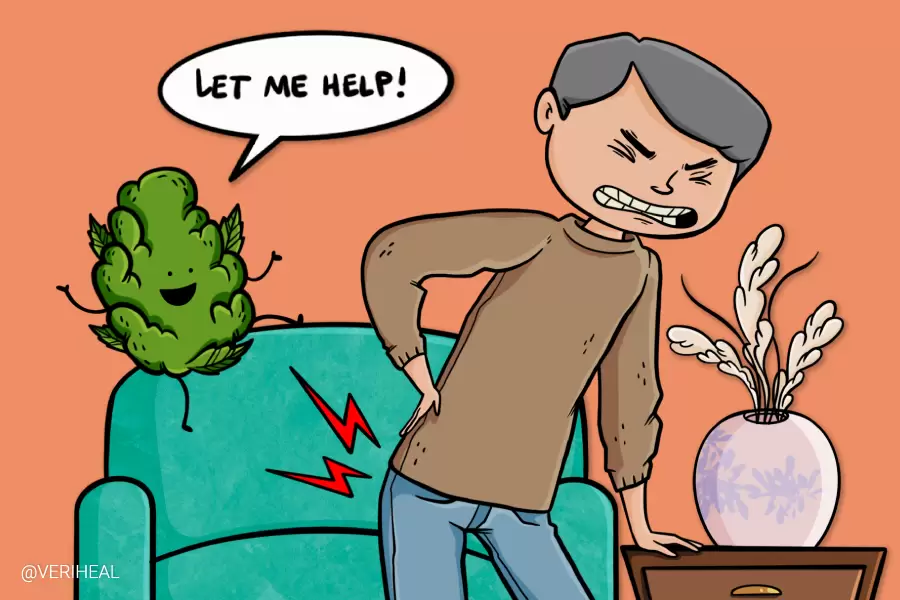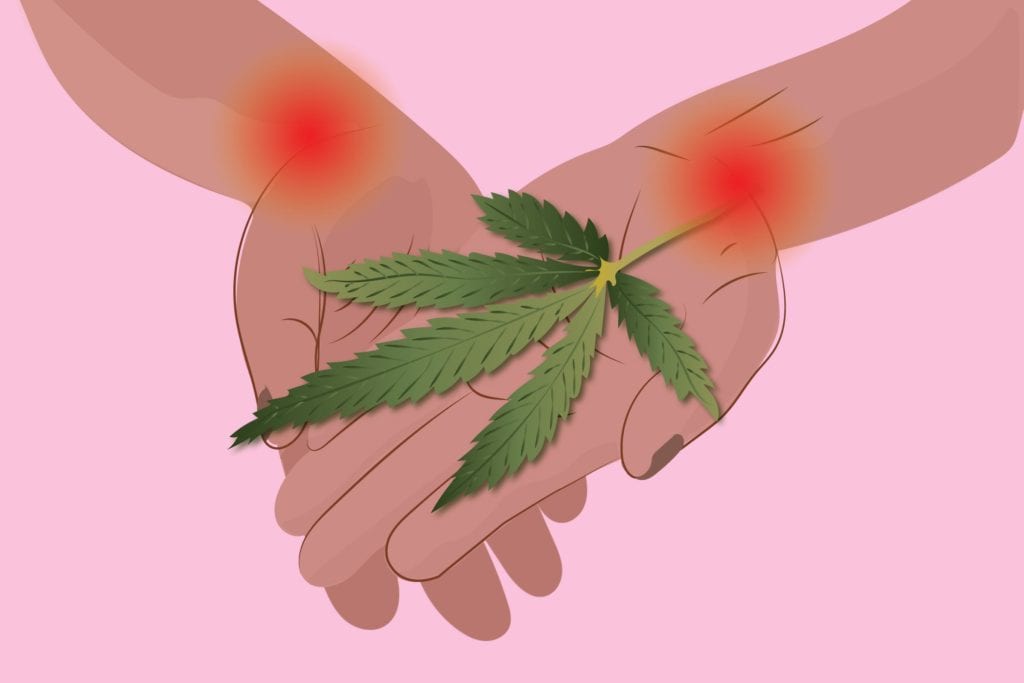Cannabis
Chronic Pain and Cannabis
Chronic pain is a widespread issue affecting millions of people worldwide. It can significantly impact an individual’s quality of life and make daily activities challenging. While there are various treatment options available, including pharmaceutical drugs, many individuals are turning to cannabis as an alternative form of pain management. In this article, we will explore chronic pain relief, cannabis, and discuss their potential benefits and risks.
Understanding Chronic Pain and Cannabis
Chronic pain is a complex condition that can arise from various factors, such as injury, inflammation, or nerve damage. It is often challenging to treat and may require a multidisciplinary approach. In recent years, there has been growing interest in the use of cannabis for chronic pain relief. Cannabis contains compounds known as cannabinoids, which interact with the body’s endocannabinoid system to produce various therapeutic effects.
The Different Types of Cannabis Strains
Before delving into the best cannabis strains for chronic pain relief, it’s essential to understand the different types of cannabis strains available. The two primary types of cannabis plants are Cannabis indica and Cannabis sativa, with hybrids being a combination of the two. Each strain has unique characteristics and may offer distinct effects.
- Cannabis Indica: Indica strains are known for their relaxing and sedating properties. These strains often have a “body high” and can offer deep relaxation and pain relief.
- Cannabis Sativa: Sativa strains are known for their energizing and uplifting effects. They may promote creativity, focus, and an overall sense of well-being.
- Hybrids: Hybrids are a combination of both indica and sativa strains, offering a blend of their respective effects.
The Best Cannabis Strains for Chronic Pain Relief
Anecdotal evidence suggests that certain strains may be more effective than others. It’s important to note that individual experiences with cannabis can vary, and what works for one person may not work for another.
Here are some common strains that provide pain relief:
- Blue Dream: Blue Dream is a sativa-dominant hybrid known for its uplifting and euphoric effects. It may help alleviate pain while providing a gentle and balanced high.
- Granddaddy Purple: Granddaddy Purple is an indica strain that is often praised for its potent pain-relieving properties. It has relaxing and sedating effects, making it ideal for nighttime use.
- ACDC: ACDC is a high-CBD strain that may provide pain relief without the psychoactive effects typically with cannabis. It is often for individuals looking for non-intoxicating options.
- Girl Scout Cookies: Girl Scout Cookies is a hybrid strain known for its potent effects and ability to promote relaxation and pain relief. It has a sweet and earthy flavor profile.
- Harlequin: Harlequin is a high-CBD strain that may help reduce pain and inflammation. It is often for individuals seeking relief without the intoxicating effects of THC.
How Cannabis May Provide Pain Relief
Cannabis contains numerous cannabinoids, including THC and CBD, which interact with the ody’s endocannabinoid system. The endocannabinoid system plays a crucial role in regulating various bodily functions, including pain perception. When cannabinoids bind to receptors in the endocannabinoid system, they can modulate pain signals and promote pain relief.
- THC: Tetrahydrocannabinol (THC) is the primary psychoactive compound in cannabis and is known for its pain-relieving properties. It can activate cannabinoid receptors in the brain and spinal cord, reducing pain signals and providing a sense of euphoria.
- CBD: Cannabidiol (CBD) is another prominent cannabinoid in cannabis. While it does not produce psychoactive effects, it may have analgesic and anti-inflammatory properties. CBD can interact with receptors in the peripheral and central nervous systems, potentially reducing pain and inflammation.
Considerations and Risks
While cannabis may offer potential pain relief for some individuals, it’s essential to consider the risks and limitations associated with its use. Here are some important factors to keep in mind:
- Legal Status: Cannabis laws vary widely across different regions and countries. It’s crucial to understand the legal status of cannabis in your area before considering its use for pain relief.
- Individual Sensitivity: Each individual may react differently to cannabis, and what works for one person may not work for another. It’s important to start with low doses and monitor your response carefully.
- Side Effects: Cannabis use can be associated with various side effects, including dry mouth, red eyes, dizziness, impaired coordination, and cognitive effects. These side effects can be more pronounced with higher THC concentrations.
- Drug Interactions: Cannabis can interact with certain medications, including blood thinners, antidepressants, and sedatives. It’s important to consult with a healthcare professional before using cannabis, especially if you are taking other medications.
Alternatives to Herbal Cannabis
If you are exploring cannabis for pain relief but hesitate to use the herbal form, you have alternative options available. Pharmaceutical companies have developed synthetic versions of THC and CBD, which regulatory authorities have approved for certain medical conditions.
- Dronabinol: Dronabinol is a synthetic form of THC that is FDA-approved for the treatment of chemotherapy-induced nausea and vomiting and for stimulating appetite in individuals with AIDS-related wasting syndrome.
- Nabilone: Nabilone is another synthetic cannabinoid that is FDA-approved for the treatment of chemotherapy-induced nausea and vomiting.
These synthetic options may provide similar pain-relieving effects as herbal cannabis but with more standardized dosing and potentially fewer side effects.
Cannabis vs. Opioids
The opioid epidemic has led many individuals and healthcare professionals to seek alternative options for pain management. Some studies suggest that cannabis may be a potential alternative to opioids for certain patient populations.
While limited scientific research exists on the use of specific cannabis strains for pain relief, anecdotal evidence suggests that certain strains may be more effective than others.
FAQs
Q: Can cannabis completely eliminate chronic pain?
A: While cannabis may provide pain relief for some individuals, it is unlikely to completely eliminate chronic pain. Chronic pain is a complex condition that often requires a comprehensive treatment approach, including lifestyle modifications, physical therapy, and medication.
Q: Is it safe to use cannabis for pain relief?
A: The safety of cannabis use for pain relief depends on various factors, including individual sensitivity, dosage, and potential drug interactions. It’s important to consult with a healthcare professional before using cannabis, especially if you have underlying medical conditions or are taking other medications.
Q: Are there any non-intoxicating options for pain relief?
A: Yes, there are non-intoxicating options for pain relief, such as high-CBD strains or CBD products. These options may provide pain relief without the psychoactive effects typically associated with THC.
Q: Can I use cannabis alongside other pain medications?
A: Cannabis can interact with certain medications, including pain medications. It’s important to consult with a healthcare professional before using cannabis alongside other pain medications to avoid potential drug interactions.
Takeaway
Chronic pain can significantly impact an individual’s quality of life, making effective pain management essential. Cannabis may offer potential pain relief for some individuals. Different strains of cannabis, such as indica, sativa, and hybrids, may have varying effects and may be more suitable for specific pain conditions. However, it’s important to consider the legal status, individual sensitivity, and potential risks associated with cannabis use. Consultation with a healthcare professional is advisable before considering cannabis for chronic pain relief.




